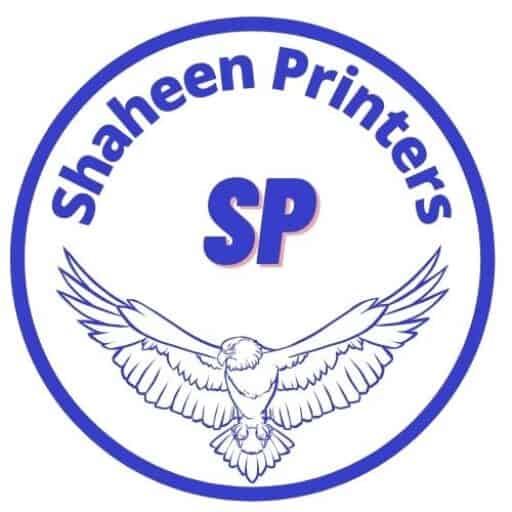Introduction
Screen printing, a widely-used printing method, has a rich history dating back thousands of years. From its humble origins in ancient civilizations to its present-day application in various industries, screen printing has evolved significantly. In this comprehensive article, we will delve into the enthralling story of “Printing History Rewind: How Ancient Techniques Shaped Modern Screen Printing.” Let’s take a journey through time to explore the roots, techniques, and transformation of screen printing.
Printing History Rewind: How Ancient Techniques Shaped Modern Screen Printing
Screen printing, also known as silk screening, finds its origins in ancient China around 221 AD during the Song Dynasty. It was initially used to transfer images and patterns onto fabric. The Chinese adapted the technique by using silk fabric stretched over wooden frames, creating stencils to define the design, and then applying ink with brushes. This rudimentary process laid the foundation for the modern screen printing we know today.

The Silk Road Connection: Spreading the Technique
The invention of paper and the expansion of the Silk Road played a significant role in spreading the screen printing technique to other regions. As the technique traversed along the Silk Road, it reached various cultures, each adding its unique twist to the process. In Japan, for instance, screen printing, known as “katazome,” became popular for creating intricate patterns on kimonos.
Screen Printing in Europe: A Revolutionary Art Form
During the 18th century, screen printing found its way to Europe. The process underwent several modifications, and artists embraced it as an innovative method for producing prints. The celebrated artist Andy Warhol later popularized screen printing as an art form in the 1960s with his iconic artworks, propelling it to international fame.
The Screen Printing Revolution: From Fabrics to Industrial Applications
In the early 20th century, screen printing’s versatility was recognized, and it began to expand beyond fabric printing. Industries such as advertising, signage, and electronics embraced screen printing for its ability to replicate images with precision and efficiency. The invention of photo-reactive chemicals further revolutionized the process, enabling the creation of intricate designs with ease.
Modern Screen Printing: Advancements and Innovations
In recent decades, screen printing has experienced remarkable advancements and innovations. With the introduction of digital technologies, computer-aided design, and automated machinery, the printing process has become faster, more accurate, and cost-effective. Today, screen printing is widely used in various applications, including apparel, packaging, electronics, and even biomedical devices.

The Technique Behind the Art: How Screen Printing Works
Screen printing involves a straightforward yet highly effective technique. It starts with a screen, typically made of polyester or nylon mesh, stretched tightly over a frame. Areas not meant to be printed are blocked using a stencil, leaving open spaces for the ink to pass through. The ink is then forced through the mesh onto the desired surface using a squeegee, creating the final image.
LSI Keyword: Screen Printing Mesh and Stencils
The choice of mesh and stencil plays a crucial role in determining the quality and resolution of the print. Finer meshes allow for detailed designs, while coarser meshes are ideal for printing on fabrics or rough surfaces. Similarly, various stencil materials, such as emulsion or film, offer different levels of durability and precision.
The Magic of Multicolor: Separation and Registration
To produce multicolored prints, a process known as color separation is employed. Each color is printed separately using a different stencil and mesh. Accurate registration of each color layer is essential to ensure a cohesive and vibrant final image. Modern screen printers use registration marks and alignment tools to achieve precision.
Advantages and Applications of Screen Printing
Screen printing’s unique characteristics offer numerous advantages and make it suitable for a wide range of applications.
Versatility in Materials: Printing on Diverse Surfaces
Screen printing can be applied to various materials, including paper, fabric, glass, metal, plastic, and ceramics. This versatility allows for its utilization in diverse industries, from textile manufacturing to printed circuit board fabrication.

Long-lasting and Durable Prints
Due to the thickness of the ink layers, screen prints boast exceptional durability and longevity. This quality makes them ideal for products that require extended exposure to harsh conditions, such as outdoor signage and promotional displays.
Cost-effectiveness for Bulk Production
For large-scale production runs, screen printing remains a cost-effective option. The setup costs are relatively low, and the printing process itself is swift, making it an attractive choice for businesses seeking high-volume printing solutions.
Artistic Expression and Customization
Screen printing’s ability to reproduce precise details and vibrant colors appeals to artists and designers. It allows them to express their creativity on a wide range of materials, giving rise to unique and personalized products.

LSI Keyword: Industrial Applications of Screen Printing
Beyond art and design, screen printing plays a vital role in various industrial applications. The technology is used in manufacturing electronics, solar panels, medical devices, and even printed electronics, contributing to cutting-edge innovations.
Conclusion
Printing History Rewind: How Ancient Techniques Shaped Modern Screen Printing showcases the fascinating journey of screen printing from its ancient roots to its contemporary form. The technique’s evolution, driven by innovation and adaptability, has transformed it from a simple fabric printing method to a versatile and powerful process with widespread applications. Today, screen printing remains an integral part of our lives, leaving its colorful mark in various industries and artistic expressions.
Frequently Asked Questions (FAQs)
What is the history behind screen printing?
Screen printing originated in ancient China during the Song Dynasty around 221 AD. It was initially used for fabric printing using silk fabric and wooden frames.
How did screen printing spread to other regions
The technique spread along the Silk Road, facilitated by the invention of paper, reaching regions like Japan where it evolved into “katazome”.
Who popularized screen printing as an art form?
The renowned artist Andy Warhol popularized screen printing as an art form during the 1960s with his iconic artwork
What are the modern advancements in screen printing?
Modern screen printing has seen significant advancements, including digital technologies, computer-aided design, and automated machinery for improved precision and efficiency.

